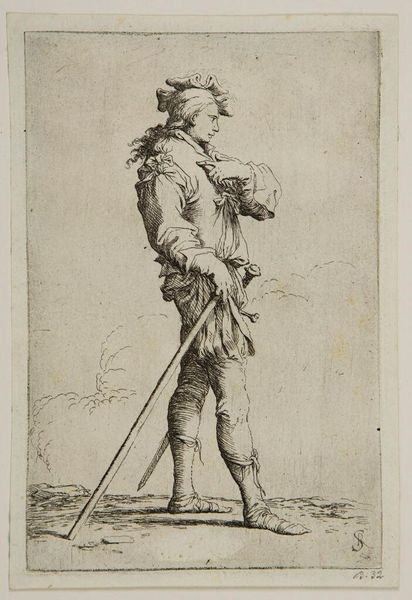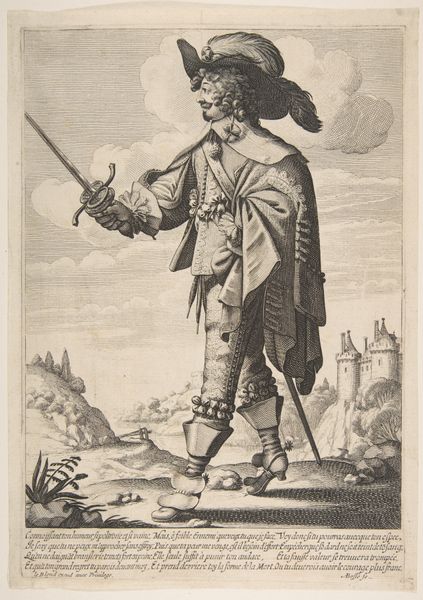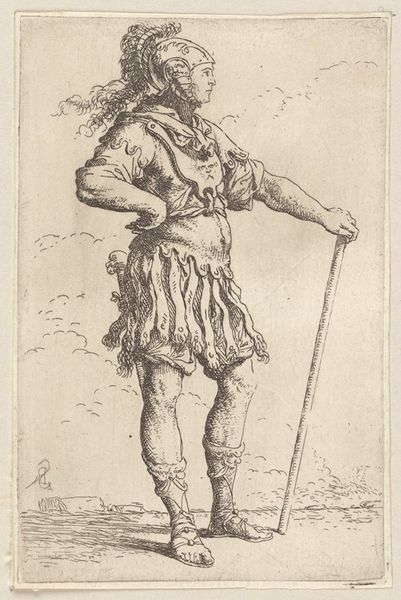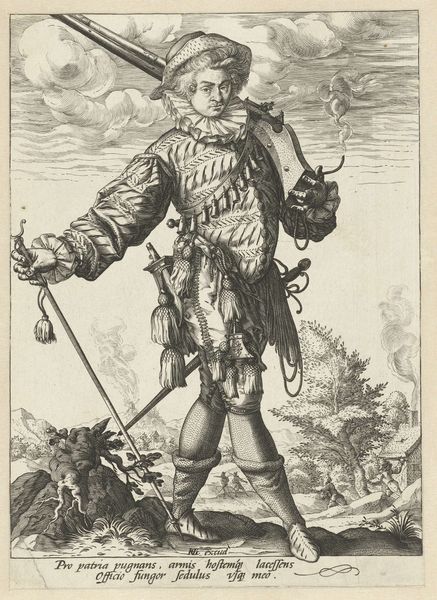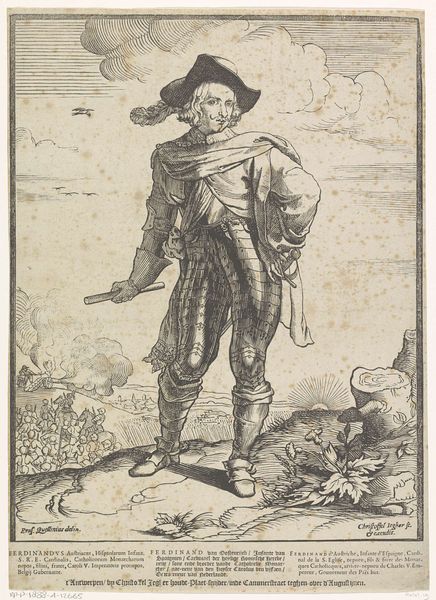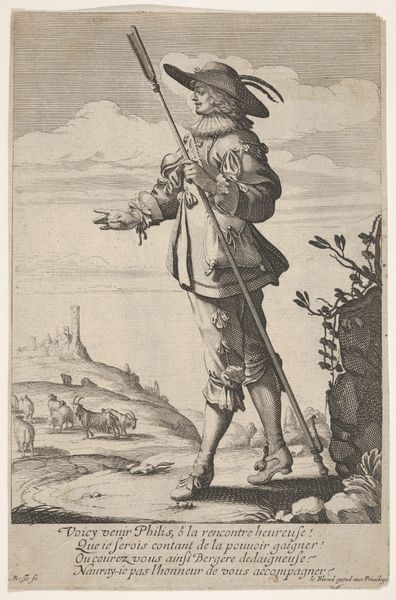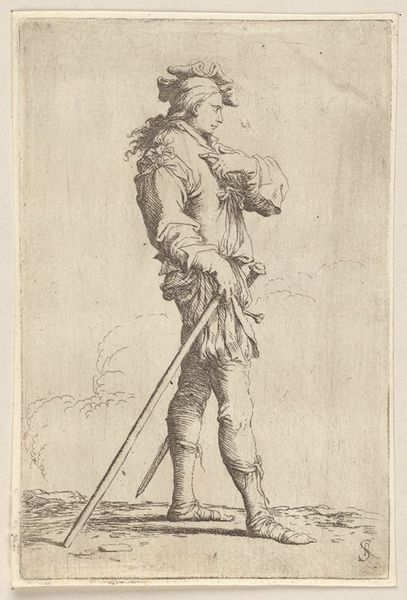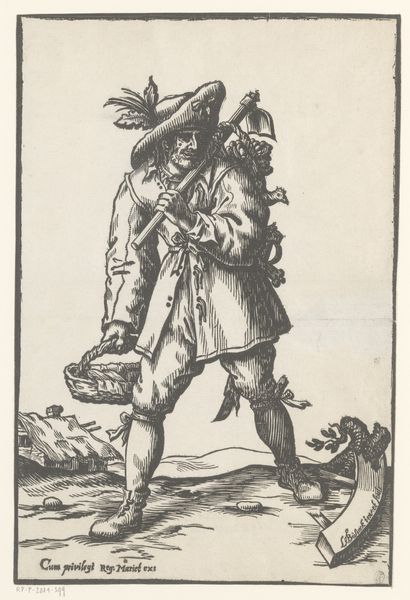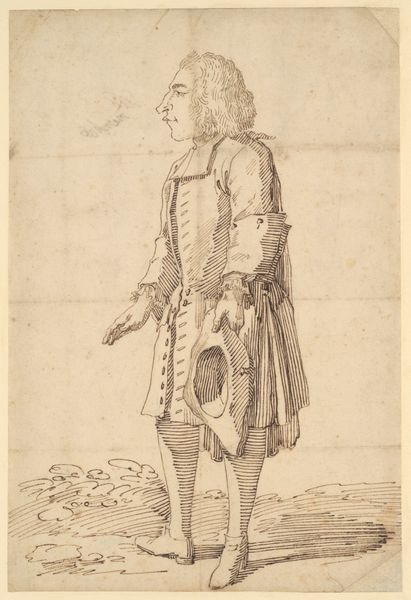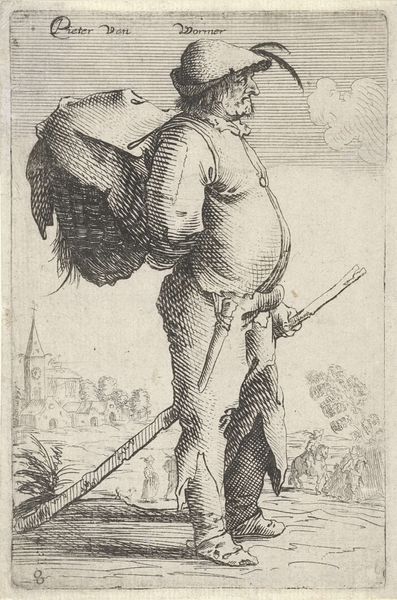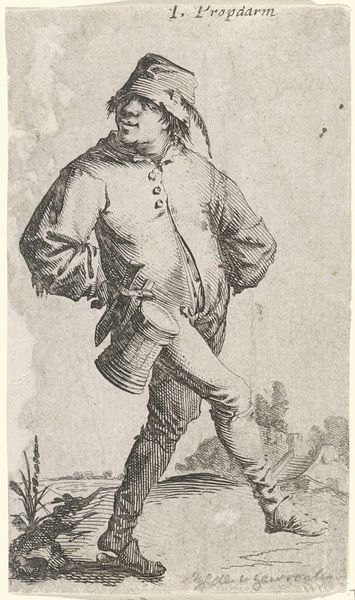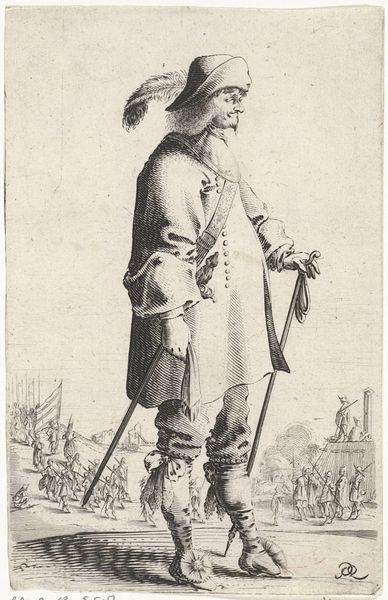
drawing, etching
#
portrait
#
pencil drawn
#
drawing
#
baroque
#
dutch-golden-age
#
pen sketch
#
etching
#
pencil sketch
#
landscape
#
pencil drawing
#
pen-ink sketch
Dimensions: height 190 mm, width 131 mm
Copyright: Rijks Museum: Open Domain
Editor: This is "Man aan de waterkant" by Aert van Waes, dating back to sometime between 1639 and 1684. It's a pen and ink etching currently held at the Rijksmuseum. There's something very raw and immediate about it, a sense of the artist capturing a fleeting impression. What's your take on this piece? Curator: This work intrigues me particularly because it exemplifies how seemingly simple drawings or sketches, readily dismissed, can be rich sources of materialist study. Consider the materials themselves: paper, ink, the etching plate, and the tools required to create this image. Who supplied them? How did their availability and cost impact artistic production in the Dutch Golden Age? Editor: That’s a really interesting point, something I hadn't considered. Curator: Furthermore, think about the labor involved. The artist's skill, yes, but also the unseen work of those who prepared the materials, the apprentices in the studio, the networks of trade that brought these resources together. What social class does the man belong to? How would different demographics have received this image? The image alludes to a very specific cultural context through materials and production processes. Editor: So, it’s not just about the final image, but everything that went into making it, revealing the socio-economic reality of its time. Do you think that knowing more about these production processes influences our perception of the artistry involved? Curator: Absolutely. By understanding the means of production, we move beyond a romantic view of the artist as a solitary genius. Instead, we see the artwork as the product of a complex web of material conditions and social relations. Perhaps the "fleeing impression" you sensed initially owes something to very quick and economical labour? What do you think? Editor: It recontextualizes it completely. I’m starting to think that understanding art really involves understanding the whole system around its creation. Curator: Precisely! It is less about individual genius and more about a whole tapestry.
Comments
No comments
Be the first to comment and join the conversation on the ultimate creative platform.

